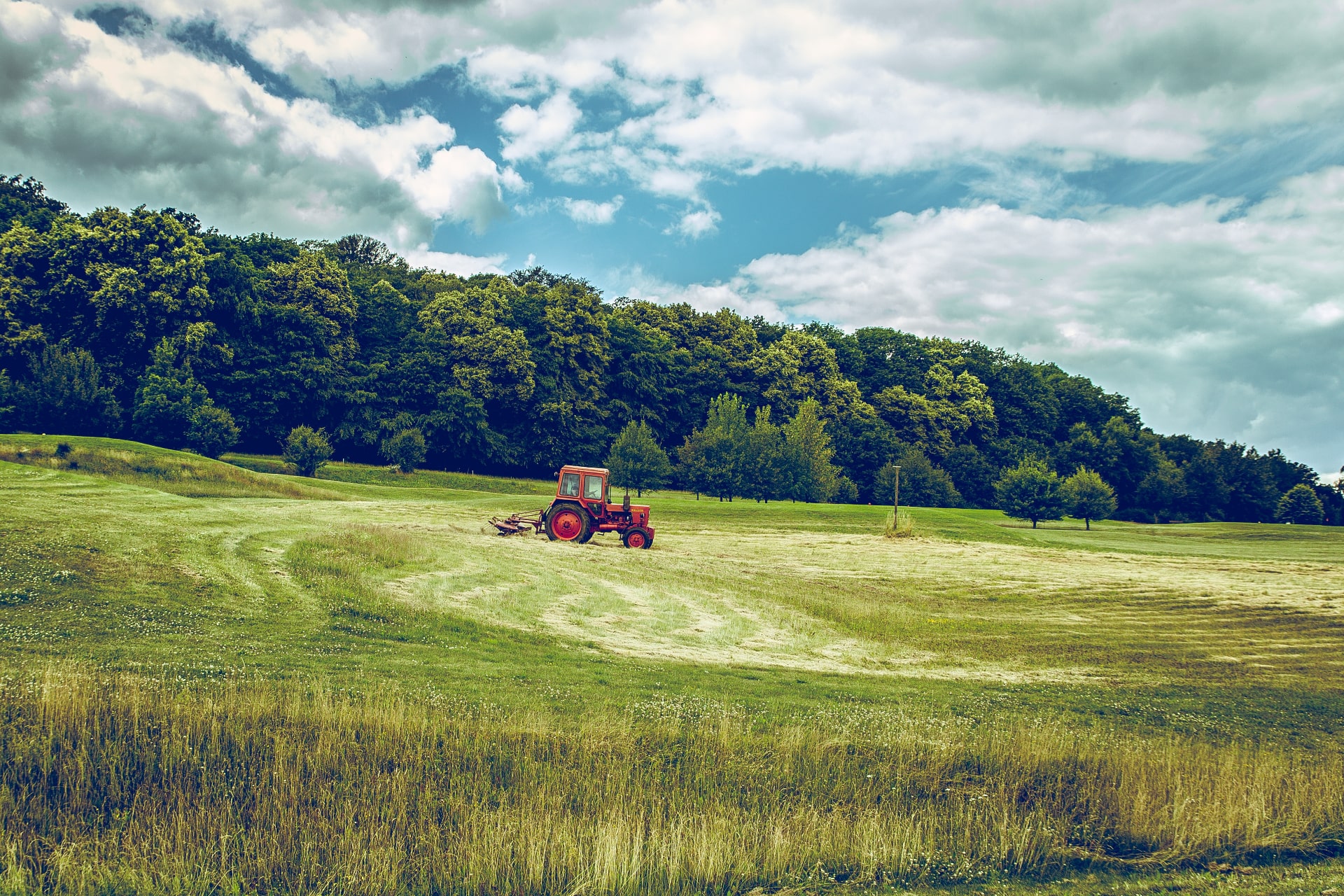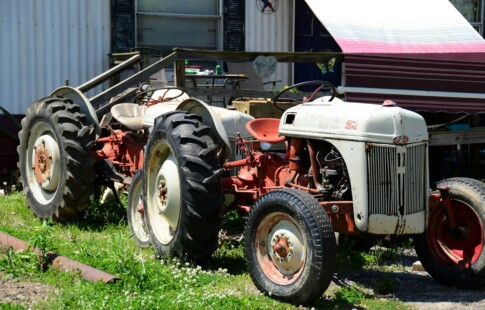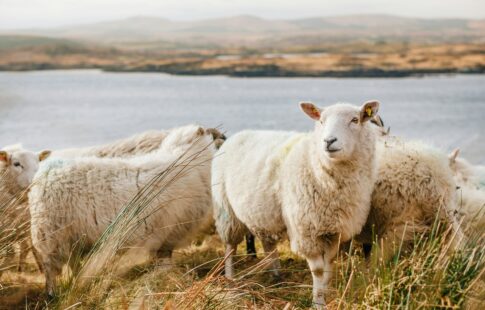
Why Humans Need At Least 20+ Types of Farms to Grow Crops
We are reader-supported. When you buy through links on our site, we may earn affiliate commission.
Looking outside at a garden might misconstrue the variety of farms out there. Long, lush vineyards make delicious wine, while your neighbor may have tiny pots of herbs that seemingly only need water to grow and nothing else. There isn’t a one-size-fits-all farm that encapsulates everything humans need to eat and survive, so what do these types of farms look like across the world? What methods do humans use to maintain them to fit their crops’ specific needs?
Types of Farms and Farming Methods
When thinking about types of farms, it isn’t just about the content of the farm — though this has a lot to do with it. Some farms grow crops just like others, but their methods are different. For example, some farms use USDA organic farming methods through their qualifications and quality control program while others don’t, and these farms look radically different to the proprietors.
These explanations will explain structures, crop variants, and methods any farmer can use to nurture their plants and animals.
1. Agritourism
Also known as a U-pick farm, these sites are grown to bring tourists to the area. These can be any farm, from sunflower fields to berry bushes. All that matters is if the main intention behind the business model is to earn money from visitors picking their own and taking it home.
The beauty of agritourism structures is less financial waste in labor and transportation, as visitors pay for that alone. It makes some farms that struggle to stay afloat find productive, ethical ways of helping their community while still sharing their produce with the masses. Some farms may generally operate in some parts of the year while offering U-pick sessions for specific breeds and blooms.
2. Apiary
Some people enjoy spending time around bees instead of running away from them — that’s what apiaries, or bee yards, are for. People raise them to harvest honey, as bees produce honey naturally, even without being under specific conditions. However, ethical bee farmers treat their bees much like pets, giving them comfortable places to live. Some beekeepers even make mobility their mission, pollinating nearby farms as they pass through the land.
3. Aquaculture
It’s the type of farm that harvests aquatic life. It includes everything from fish to seaweed. Many coastal nations worldwide rely on aquaculture as their primary income source, and this, combined with other national participation, has led to an increased overfishing problem that experts are attempting to find solutions to continue ethical fishing practices.
4. Arable Farming
Arable, by definition, means land that is suitable for growing crops. However, arable farming uses what’s available to grow plants like barley instead of other vegetables or raising animals. Arable farmers use what’s present in the natural land without building infrastructure or introducing foreign technology, like irrigation. It’s challenging to produce a healthy crop without fertilizer or modern tools, but it makes so few emissions that the idea draws many people to its style.
5. Coop
Not everyone wants to farm alone, and sometimes, local farmers don’t have a choice. Coops provide an opportunity for local farmers to collaborate while saving each other’s profits. Some farmers can’t survive if they have a terrible season, but joining a coop means they can still work toward their goals with others who can empathize with their situation and mission.
6. Dry Farming
A land that receives less than 20 inches of rain and has no way to execute irrigation is dry farmland. How can farmers grow anything valuable without water? Plenty of crops like watermelons wouldn’t need it, but the diversity in these setups is low.
7. Family Farming
Also called generational farming, family farms are operated by families. They seek to feed more than just the family serving it. However, many family farms fear the cycle will stop as younger generations focus on tech jobs, entertainment, social media, and thought work-style jobs instead of taking the mantle.
8. Flower Farm
Many farms grow crops for food, but some farmers want to grow beautiful flowers. Flower farms nurture blooms for commercial purposes like flower arrangements or decor. It’s a reminder that not all farms produce the same result — food on a dinner plate.
9. Hay Farm
Everyone raising animals has to get their feed from somewhere if they don’t grow it themselves. Hay farmers take care of this gap by increasing meals for livestock. The quintessential image of hay bales on farms is representative of centuries of refined grass-farming methodologies, which now include efficiency improvements like tractors and automated balers.
10. Hydroponic
Hydroponics is a style of farming that eliminates soil from the equation and focuses on nutritional water to grow plants. Many households — or kitchen gardeners — and corporations participate in hydroponic agriculture because it’s low maintenance and takes up minimal surface area. Up-and-coming hydroponic techniques are making it one of the most trendy options in the agricultural sector.
11. Industrial or Commercial Farming
To make enough food for the masses, industrial-sized farms must exist. Many questions a commercial farm’s ability to grow plants sustainably, as aggressive methods strip the soil of resources for quantity. Advocacy promotes safer industrial farming methods, and technological enhancements seek to make farms more innovative and efficient without compromising soil health biodiversity.
12. Micro Farms
For one of the most sustainable options in farming, farmers can have small plots that are only a few acres, performing most of the maintenance by hand. These micro-farms are an excellent option for people who want to homestead while side-hustling at farmers markets.
13. Orchards
Orchards are places where fruit trees thrive, but it’s not just apples that come from orchards. Farmers also plant maple trees and nut trees to get their products. Generally, it doesn’t matter how many trees there are
14. Organic Farming
Organic farming has a specific list of qualifications, but in general, it defines a farming setup that embraces eliminating synthetic fertilizers and pesticides.
15. Regenerative Farming
Agriculture that takes a regenerative approach focuses on feeding nutrition back to the planet based on how much it takes to grow what the farmer needs. They can do this by encouraging biodiversity, minimizing monoculture, protecting instead of disturbing soil, and ensuring not to infringe on neighboring communities, wildlife habitats, or indigenous communities.
16. Subsistence Farming
These farms are honed precisely for designated families. Many regions in rural communities, notably in Africa, rely on subsistence farming to survive.
17. Urban Farming
Urban agriculture uses specific farming techniques for incorporating traditional farming in urban and suburban areas. Citizens have found a way to transform the concrete jungle into a proper region for growing produce using rooftop gardens, vertical farms, and hydroponics.
18. Vineyard
Acres of gorgeous trellises signify an operation ready to make wine. However, vineyards also sell their grapes for other purposes, like jams, preserves, raisins, juices, and candies.
19. Animal Farming
Many farms can have animals residing on the land, sometimes alongside crops. Here are some of the most prominent versions:
- Mixed farming: Many farms are mixed farms because they focus on farming and animal-raising.
- Ranching: This farm raises cattle and other large animals for butchering. It is also called pastoral farming.
- Dairy farming: These farms raise cattle and related animals, but they’re also focused on milk and cheese production.
- Poultry farming: Farms that raise domesticated birds like chickens or turkeys for eggs and meat.
- Nomadic: These farmers move with their herds to search for grazing areas.
How the Types of Farms Express Human Ingenuity
Humans will continue to innovate farming styles and practices — and these aren’t even all the types of farms. The population is growing, and there is a higher demand now than in history for food accessibility — even among food scarcity and poverty concerns.
Innovators must define solutions for ethical farming that suit the planet’s needs without exploitation of land, animals, or laborers. If you’re thinking of farming, understand the scope is large and varied for anyone to experiment.
Share on
Like what you read? Join other Environment.co readers!
Get the latest updates on our planet by subscribing to the Environment.co newsletter!
About the author
Steve Russell
Steve is the Managing Editor of Environment.co and regularly contributes articles related to wildlife, biodiversity, and recycling. His passions include wildlife photography and bird watching.





